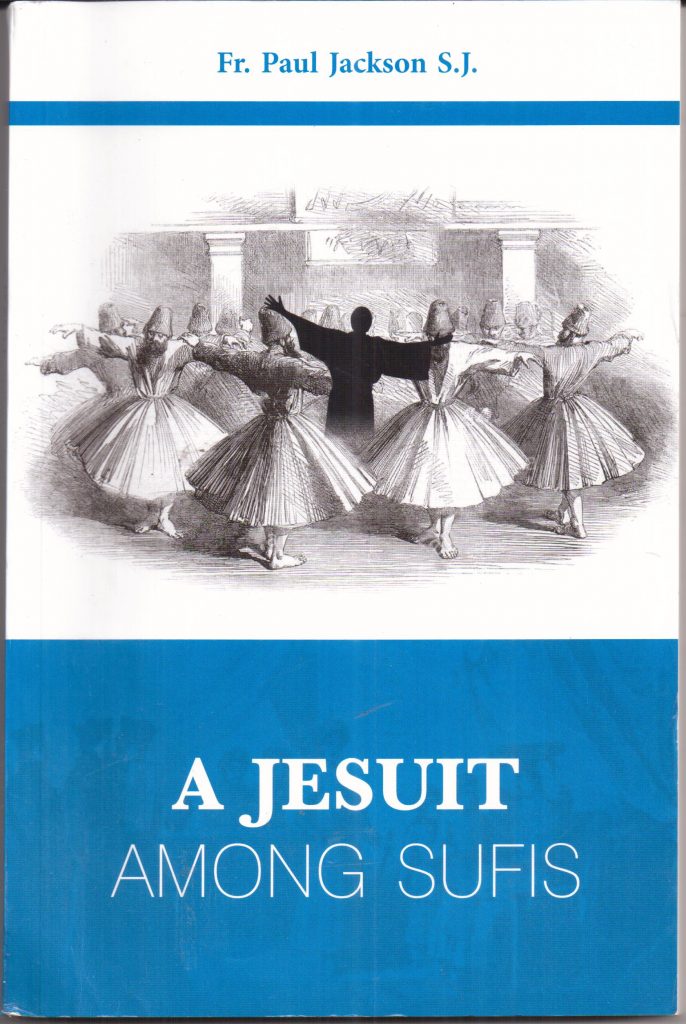Name of the Book: A Jesuit Among Sufis
Author: Paul Jackson
Published by Gujarat Sahitya Prakash, Anand
([email protected])
Year: 2017
Pages: 152
Price: Rs. 150
Reviewed by: Roshan

Born in Australia, Paul Jackson has been living in India for decades, for much of the time in Bihar. He is a Catholic priest, belonging to the Jesuit order, and is at the same time a prominent scholar of South Asian Muslim Studies. He studied History at the Jamia Millia Islamia, New Delhi, and Persian in Iran and taught Islamic thought and Christian-Muslim relations at several institutions.
Probably the most interesting part of this book is the description of how a Catholic priest from Australia developed a deep interest in Muslim Studies, dedicating much of his life to this purpose. In 1961, Jackson arrived in Hazaribagh, in Bihar. Then, in 1972, he went to Delhi to do a Master’s degree in medieval Indian history and a diploma in Urdu. While in Delhi, he tells us, he attended a seminar held in honour of the noted Chishti Sufi, Baba Farid Sahib. “What struck me,” he writes, “was the fact that Muslims, Hindus, Sikhs and Christians all gathered to present papers in honour of this famous man. It was a very telling lesson: Sufis bring people together!”
It was at this seminar that the desire to do research into the life of some great Sufi from India was born. For this purpose, Jackson decided to study Farsi, probably because much of the medieval Indian Sufi literature is in that language. So, in 1974, this intrepid traveller made his way to Shiraz, in Iran, where he spent some 13 months. It was in Shiraz that he heard of the 14th century Makhdoom Sharfuddin Ahmed bin Yahya Maneri (d.1381), probably the most well-known Sufi of Bihar. After his final spiritual training as a Jesuit, Jackson went to Patna, to begin his doctoral studies on this Sufi under the guidance of the late Professor Syed Hasan Askari, spending more than three years on this. With his professor’s help, he began to translate a manuscript more than 400 years old, a collection of Makhdoom Sahib’s letters in Farsi written to his disciple Qazi Shamsuddin in 1346-47, known as the Maktubat-e Sadi. This text provides Makhdoom Sahib’s basic exposition of the Sufi Path to God as understood by him.
Jackson submitted his thesis in 1979. Shortly afterwards, Sharafuddin Maneri: The Hundred Letters was published in the UK and the USA, and later from Delhi as The Way of a Sufi: Sharafuddin Maneri. Over the years, Jackson continued to write and produced some other books.
As Jackson pursued his studies on Makhdoom Sahib, he discovered that Makhdoom Sahib’s world ‘was filled with God’. More than a year after he began working on the manuscript of Makhdoom Sahib’s letters, the first draft of Jackson’s translation was completed. Jackson writes:
Many changes took place within me during those long months. I can still recall the oft-repeated experience of being astonished at the depth of Maneri’s spiritual insight and the beauty of its expression. I realised also that there was a whole process of interiorization going on within me as I met God dwelling in the heart of Sharafuddin Maneri. Deep down, in those recesses of which we are only dimly aware, His presence was striking new roots, which were plunging more deeply within me”¦the reality of God was[“¦] entering my life in a new form [“¦] Time and again the thought had occurred to me, as I edged steadily forward, that the w h o l e e n t e r p r i s e w a s undoubtedly worthwhile, even if nobody else ever looked at my translation, for it had definitely made a profound impact on me.”
Jackson further adds:
When I turned to study his [Makhdoom Sahib’s] life and saintly death, all my good opinions were simply confirmed. I had no difficulty in acknowledging him, along with countless Muslims, as one of God’s saints. I joined them in rejoicing at the wonders God worked in and through him.”
Jackson recognises “the soundness of the spiritual teaching that Maneri presents in his letters’ even as he notes that “here and there statements and positions depend on some Islamic doctrine which is not shared by Christians.”
Studying the life and writings of a medieval Sufi hasn’t been a mere academic exercise for Jackson. His studies have possibly led to a major transformation in him and perhaps in ways he wouldn’t have once expected. He writes:
One thing that strikes me most forcibly as I reflect on all that has happened to me as a consequence of the basic experience as a Jesuit priest, of coming into very close contact with a Sufi. As a result of years of painstaking study of what Maneri has himself written in fourteenth-century Persian, or which was recorded after he had spoken to various groups who had assembled to hear him, is the process of change which has been initiated in me. It might be described as an ever-growing openness.
A fruit of such study across religious boundaries is that one is often able to discover gems of goodness in other religions and communities. Such a process can lead to a marked inner change for the good. And that’s perhaps what happened with Jackson through his studying a fourteenth century Sufi from Bihar.
Among the other issues the book discusses are some challenges that a Jesuit studying Islam can face, as Jackson explains, on account of biases against Muslims among some fellow Christians as well as the issue of Christian-Muslim dialogue. A good number of pages are also devoted to Sufism and to some noted Sufis although this perhaps could have been avoided as the same sort of material is perhaps available in numerous other books by other writers and in greater detail.

COMMENTS